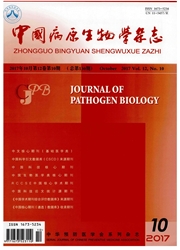

 中文摘要:
中文摘要:
目的分析1999~2011年深圳市肺结核流行状况,并建立数学模型进行预测。方法应用描述性流行病学方法对深圳市1999~2011年肺结核病例的年龄、职业等流行病学特征进行分析,并根据其月发病率曲线非线性、非平稳的特点,选择SARIMA模型进行建模,以1999年1月~2010年12月深圳市肺结核病例为样本,对2011年和2012年肺结核发病率进行预测,采用2011年数据对模型进行验证。结果深圳市肺结核经历了2004年和2008年两次增长,夏秋季节发病率较高,春冬季节较低;报告病例以青壮年人口(73.50%)中最多;患者男性多于女性(1.76∶1);职业以工人(42.69%)和从事家务及待业人员(26.72%)为主;且SARIMA模型显示近两年肺结核发病率呈下降趋势。结论肺结核损害了年轻劳动力,需加强对中青年人群的肺结核诊断和治疗,SARIMA模型预测的肺结核发病率与实际观测值拟合程度较高,可为肺结核防控提供理论依据。
 英文摘要:
英文摘要:
Objectives To analyze the prevalence of tuberculosis outbreaks in the City of Shenzhen and create a mathe- matical model to predict those outbreaks based on data from 1999 to 2011. Methods Data on reported cases of tubercu- losis were collected, and descriptive epidemiology was used to analyze the epidemiological characteristics of tuberculosis incidence, such as age, gender, and occupation. A SARIMA model was created using data from January 1999 to Decem- ber 2010 based on the monthly incidence curve of tuberculosis cases in Shenzhen. Data from 2011 were fitted to the model to predict the incidence of tuberculosis in 2011 and 2012. Result The incidence of tuberculosis increased in 2004 and 2008. Reported cases most often involved younger individuals (73.5%) and men more so than women (1.76 : 1). A mong the employed, cases most often involved workers (42. 69%). Cases also involved homemakers and the unemployed (26.72%). The SARIMA model indicated that the incidence of tuberculosis has tended to decrease over the last two years. Conclusion Diagnosis and treatment of tuberculosis needs to be enhanced for the younger workforce. The pre dicted results of the SARIMA model fit with actual observations. These findings provide a theoretical basis for tuberculo- sis prevention and control.
 同期刊论文项目
同期刊论文项目
 同项目期刊论文
同项目期刊论文
 Epidemiological features and risk factors associated with the spatial and temporal distribution of h
Epidemiological features and risk factors associated with the spatial and temporal distribution of h 期刊信息
期刊信息
